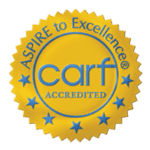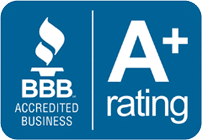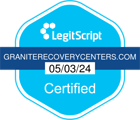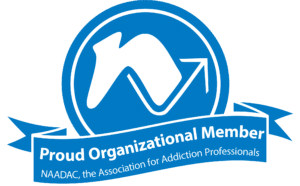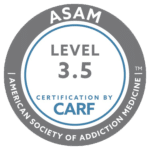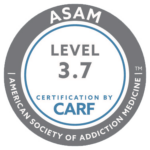Cocaine Addiction Signs & Symptoms
Cocaine addictions often start from people using the drug recreationally. However, with regular use, it is not uncommon for users to find that they are developing a habit. Along with the habit, the body and mind develop a dependency. Before long, the individual discovers they have a cocaine addiction. Sometimes, friends, family, and coworkers may become aware of the drug user’s addiction before they are willing to accept it. If you suspect someone you know has a cocaine addiction, the following signs and symptoms may confirm it.
Social Behaviors That May Indicate Cocaine Abuse
Learning the signs of cocaine use can allow friends and loved ones to identify a drug problem and potentially intervene before it becomes severe. Some of the earliest signs of cocaine use are observable in a person’s behavior and general mood. In social settings, people who use cocaine may excuse themselves to private areas frequently to consume their drug of choice. Cocaine is a stimulant. Therefore, the individual may appear to be in an unusually elevated or hyperenergetic mood. The person may behave as if they have an atypically inflated ego. They may exhibit regular mood crashes and have a diminished appetite for food. The individual’s pupils will likely appear to be dilated.
If the individual is less careful, you may see a white, powdery residue on or inside their nose. In many cases, people use cocaine to stay awake for long hours. The individual may spend more time “partying” or even disappear for extended periods despite having other responsibilities.
Signs of Crack Cocaine Abuse
Crack is a variety of cocaine users smoke, typically in a small glass pipe. The “high” produced by crack lasts 10 to 15 minutes. On the other hand, powdered cocaine may last up to an hour. Therefore, a crack abuser may frequently disappear to consume more of the drug. People who smoke crack regularly may go on binges and disappear for hours and often days or weeks. If you observe a loved one during a crack binge, they may exhibit signs that include disorientation, delusions, paranoia, antisocial behavior, and aggression. In many cases, crack takes priority over the individual’s responsibilities, career, family, hobbies, and everything else they previously prioritized in life.
Preliminary Physical Signs of Addiction
When a person is physically addicted to cocaine, the people closest to them are more likely to notice changes in behavior and potentially in their health. It is not uncommon for regular cocaine users to develop chronic postnasal drip and nosebleeds. People who dissolve and inject the drug will have needle marks on their arms or at other sites on their bodies. The longer a person abuses cocaine, the more their physical health and appearance will likely deteriorate.
Addicted individuals also have difficulty sleeping and may be tired more often. They may be more depressive, agitated, or outwardly nervous. At this point, the individual will have strong cravings for cocaine to the extent that if they abstain from using cocaine, they will experience worsening withdrawal symptoms. For cocaine addicts, early withdrawal symptoms include mood crashes, anxiety, irritability, apathy, and extended periods of sleep.
Internally, cocaine abuse stresses the cardiovascular system. Those who abuse cocaine long-term are more likely to develop a faster heartbeat, constricted blood vessels, and possibly an enlarged heart. These individuals may eventually have a heart attack or go into cardiac arrest.
Seeking Treatment for Cocaine Addiction
The safest way to recover from cocaine addiction is to seek medically supported and supervised treatment at a rehabilitation facility. Drug treatment centers offer various program options to help clients overcome their addiction to cocaine. Options generally include outpatient, inpatient, and partial hospitalization programs. Treatment facilities may differ slightly in terms of the types of therapies they offer. Nevertheless, there are some proven approaches to substance use and addiction rehabilitation that most treatment centers implement.
Residential Detox for Cocaine Addiction
When an individual develops a physical dependency on cocaine, they generally require supervised detox before beginning their rehabilitation program. Onsite detox centers offer 24/7 supervision and medical support to keep clients safe. Not only are withdrawal symptoms uncomfortable, but some symptoms can be life-threatening. While no medications are available to alleviate the discomforts of cocaine withdrawal directly, doctors may prescribe beta-blockers to treat anxiety and, if necessary, antidepressants to stabilize some patients’ moods if they have depressive symptoms that last longer than 7 to 10 days. Detoxing at a residential facility is especially helpful for patients who have relapsed in the past or who otherwise have triggers in their immediate, everyday life that contribute to their tendency to use cocaine. Individuals with a stable home environment supporting a sober lifestyle may choose an outpatient detox program if they do not require medical supervision.
Cocaine Withdrawal Timeline
Symptoms of cocaine withdrawal typically resolve within 7 to 10 days following the last occurrence of use. Unfortunately, cravings for the drug may persist for much longer and may even resurface after the person has abstained from using the drug for years. Drug treatment programs help addicted individuals learn to manage urges to abuse cocaine without relapsing. People who abuse cocaine for shorter periods are likelier to have shorter withdrawal periods. Those who use the drugs for years may have symptoms that linger for months, possibly due to how the drug builds up in the body over time.
Cocaine Withdrawal Intensity
The amount of cocaine a person consumes at a time may impact the severity of their withdrawal symptoms. People who consume substantial amounts of cocaine at one time are more likely to experience withdrawal with greater intensity. Those who consume small amounts of the drug at a time will likely have a less intense withdrawal experience.
Dependence on Multiple Drugs
People who have developed physiological dependence on one or more additional drugs may experience a combination of withdrawal symptoms. Some symptoms may occur after abstaining from cocaine, while others may result from another substance. Polysubstance dependence may complicate the detox experience and worsen the symptoms for the patient. A residential detox center can monitor the patient and take all available measures to help them understand the nature of their symptoms and remain as comfortable as possible.
Co-Occurring Medical Conditions and Cocaine Detox
Sometimes, a client may have a preexisting health condition like heart disease. Medically supported detox is likely the best option due to the extent that cocaine addiction impacts cardiovascular health. At an onsite detox facility, clinicians can prescribe medication to treat the cardiovascular condition. If the detox process strains the individual’s health, the staff can detect the potential problem early and adjust treatment.
Detoxing Off Cocaine With Mental Health Issues
Patients sometimes have an underlying mental illness in combination with cocaine addiction. These situations are also better suited for residential detox at an inpatient facility. Clinicians at a medical detox facility can assess the nature of the patient’s mental health condition and treat it accordingly. For patients with dual diagnoses, staying clean and sober typically depends on successfully managing the underlying mental health condition.
Entering a Treatment Program
After detox, when the worst of the patient’s withdrawal symptoms are likely to have passed, the person is ready to enter a treatment program. At the treatment program, counselors and clinicians will guide program participants through uncovering the origins of their addiction. In addition to learning to identify and avoid triggers contributing to their cocaine habit, clients will also learn the life skills they will need to navigate everyday situations and remain drug-free. Some programs offer traditional, 12-step program-based treatment modalities. Others also incorporate holistic therapies to enhance program participants’ experiences and improve their likelihood of staying clean.
Green Mountain Treatment Center for Cocaine Addiction
Many individuals find that the best way to overcome addiction is to receive treatment in an isolated setting, separate from the influences and stressors of their everyday lives. Green Mountain Treatment Center is a residential facility situated between the scenic White Mountains and Lakes Region in New Hampshire. Clients can clear their minds amid fragrant fruit orchards and fresh mountain air.
Green Mountain Treatment Center offers a client-to-client mentoring program to help ease newcomers into their rehabilitative setting by partnering them with fellow clients who are further along in their treatment program. In addition to offering cognitive behavioral therapy, process groups, and 12-step program meetings, clients may also build their confidence and improve their overall health by incorporating exercise at the gym, yoga, and meditation into their program. New clients can complete detox within the same setting as their treatment program, as Green Mountain Treatment Center also has an onsite medical facility.

